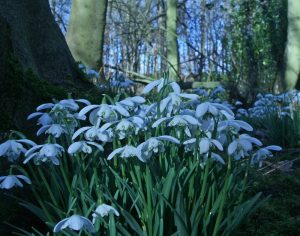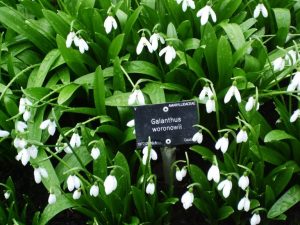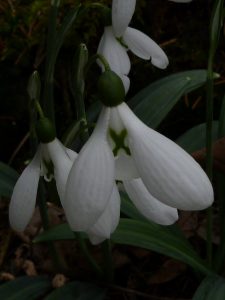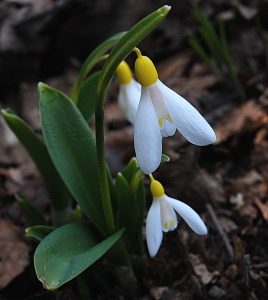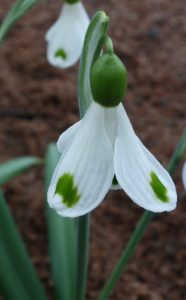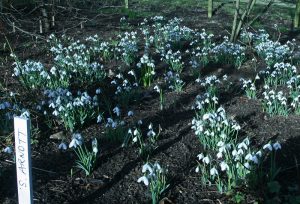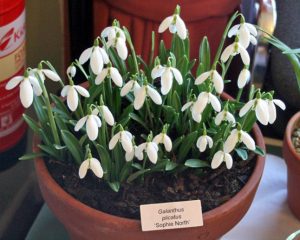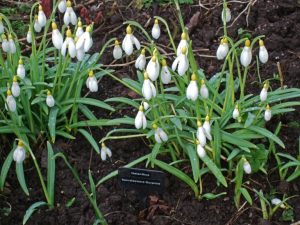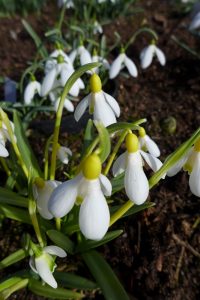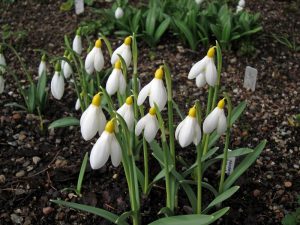Snowdrops
Despite the very cold spell recently, snowdrops are coming into flower. They are very hardy and can even push though frozen soil. The early white flowers are often seen as a sign of purity and hope. The festival of Candlemas on 2nd February often featured snowdrops as Candlemas bells. Galanthus nivalis is the common snowdrop. Though it naturalises well it is not a British native. It was introduced to Britain in the 17th century from south-east Europe. It likes to grow in semi-shade in damp soil, often in deciduous woodland. Its leaves are slender and grey green.
- Double snowdrops
- G. woronowii
Another common snowdrop is the double form G. elwesii which is larger, sometimes called the Turkish snowdrop. It has tall, broad grey leaves. G. plicatus comes from the Crimea and is also easily grown. Its greyish leaves have two folds along the edges and often a central stripe. G. woronowii comes from the Caucasus and has green leaves. G. reginae olgae, named after a Russian born queen of Greece, even flowers in autumn.
- G. plicatus ‘St Andrews Cross’
- G. woronowii ‘Elizabeth Harrison’
- G. Trymposter
There are lots of named snowdrops. Many have been discovered as unusual forms or natural hybrids among existing plantings rather than being bred by gardeners. Some galanthophiles (snowdrop enthusiasts) have collections of over a hundred. Snowdrops with all the six petals of equal length are known as poculiforms. The Greatorex doubles are all named after Shakespearean characters such as Cordelia and Hippolyta. One of the best named varieties is the vigorous ‘Sam Arnott’ named after a 19th century Scottish gardener from near Dumfries.
- Galanthus ‘Sam Arnott’
- Galanthus ‘Sophie North’
One very special snowdrop is ‘Sophie North’ – a selection of Galanthus plicatus. This was named for one of the children murdered in the Dunblane atrocity. This led to the Snowdrop Campaign to tighten the control of firearms in this country. Collectors value plants with unusual green markings on the white petals or in a few cases yellow on the ovary – the bit above the flower. These will sell for £10 or more, some even for as much as £50 per bulb. The highest price paid for a Scottish snowdrop was £725 for a yellow form of G. woronowii at an auction in 2012, so it is worth looking out for unusual snowdrops in your garden. Recently Ian Christie raised £800 for NHS charities from an auction of bulbs of a new selection of G. plicatus he has named ‘Lady of the Lamp’.
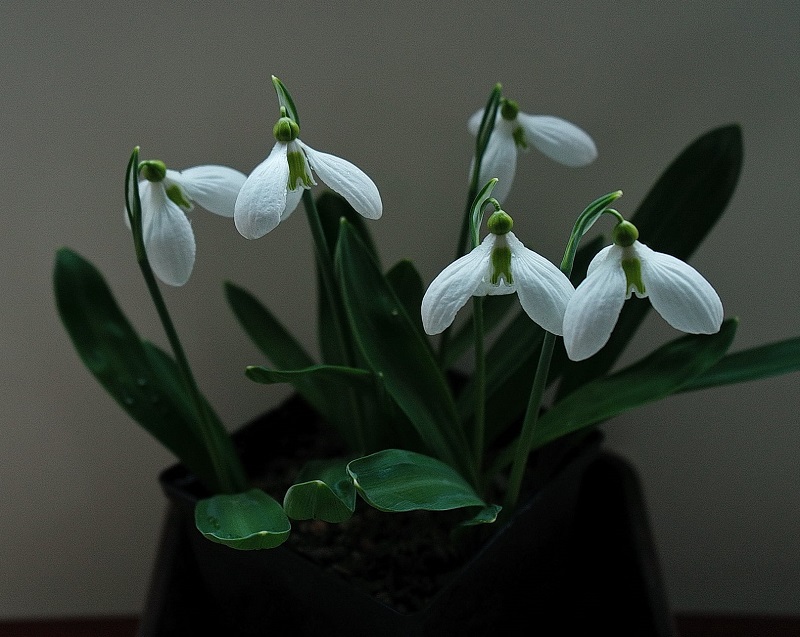
Galanthus ‘The Lady with the Lamp’
Snowdrop bulbs hate to dry out which is why bulbs bought in packets often fail. The best time to lift and move snowdrops is when they are about to go dormant- the leaves are dying back but still visible so you can locate the bulbs. If you are sure where the bulbs are you can lift and shift them in summer. If they are not to be replanted immediately keep them in compost and slightly damp. Many nurseries lift snowdrops when they are still in growth – “in the green”. This allows you to see what you are getting but some root damage is inevitable. Plants received in the green should be planted as soon as possible.
- Galanthus ‘Spindlestone Surprise’
- Galanthus ‘Primrose Warburg’
- G. sandersii
In a normal year you can visit good displays of snowdrops throughout February and March in gardens participating in the Scottish Snowdrop Festival. Although travelling to gardens is not currently possible due to Covid-19 restrictions, do have a look at their website to see where you can visit locally. There are even some virtual tours. Some gardens and nurseries have interesting snowdrops for sale online. Try Avon bulbs, Dryad nursery, Edrom nursery, Edulis nursery, or Macplants, who all have a good selection. Good snowdrop gardens in Scotland include Cambo in Fife, Branklyn Garden in Perth, Lawton House in Arbroath, House of Dunn in Montrose and RBGE Edinburgh.
Ian Christie and Stan da Prato
February 2021


